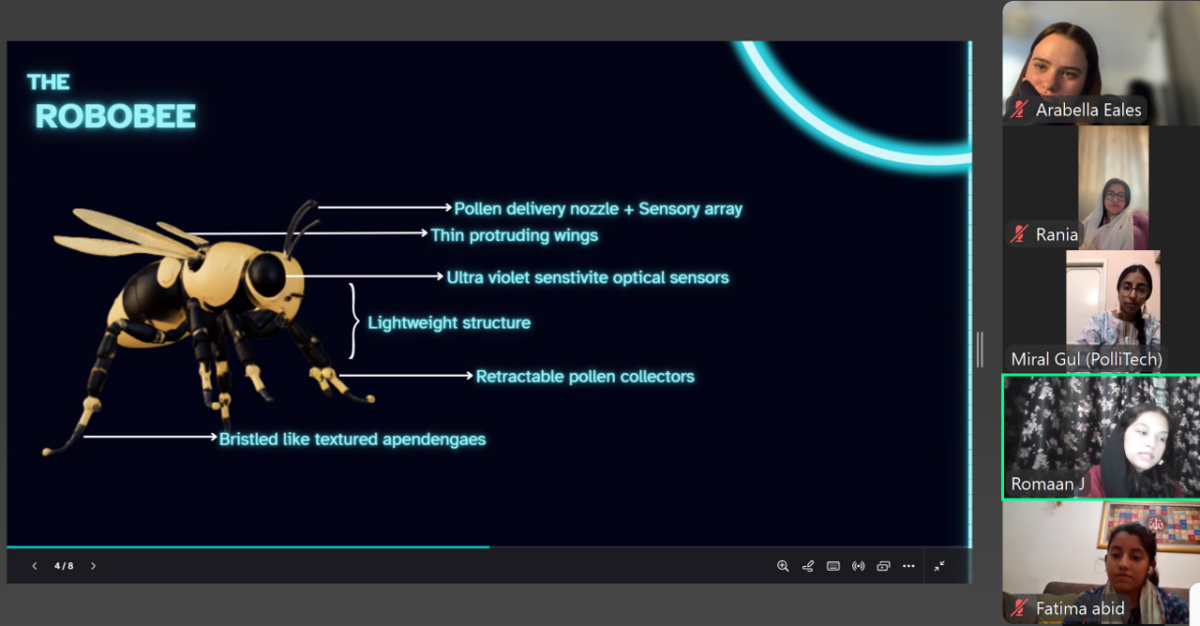The Chaotic Educational Divide in Prison

In 2016, I was honoured to be asked to sit on an expert panel with Dame Sally Coates, senior members of HMPPS, and leaders of Third sector organisations such as myself, working within the Criminal Justice system with a specific interest in Prison education. The then newly published report ‘Unlocking potential’, was an important review into Prison Education which called for it to be placed ‘at the heart of the Prison System’.
The report contained important recommendations, such as:
- Prison Governors being responsible and accountable for Prison education, designing curriculums built around local employment needs and the needs of the prisoners in their care;
- Building the capacity of those facilitating learning in custody, including of course Teachers, but also officers, industry and gym instructors, and peer mentors;
- Educational assessments on induction to prison to ascertain each prisoners current levels and needs, and then the sharing of those personal learning plans internally and externally;
- A focus on prisoners with diagnosed and undiagnosed LDD, not just in the classroom but across the regime and activities available;
- Improved engagement with employers to ensure that the vocational education matched employer needs in the community where before, it was below standard;
- Acknowledgement that employability shouldn’t be the focus for everybody, and that creative arts and personal and social development has a value in and of itself in terms of building confidence;
- Well-being and life skills which are important rehabilitative factors, especially for older prisoners and those with more serious offences for whom the current funding arrangements for higher education particularly, are restricted, blocking their educational and personal development;
- and finally, a call for smarter use of ICT in custody to promote self-study with a ’fundamental review of the overly restricted use of ICT’.
Common sense aspirations I know my colleagues and I were relieved to see within the report. So exactly how far have we got with those eight key recommendations in the six years since Dame Sally Coates’ review?
‘Chaotic’ Prison Education System Report
Robert Halfon, Chair of the Education Select Committee last week released his long-awaited report on the chaotic prison education system, indicating that things have not improved to the degree we would have hoped for. He has called for five key recommendations, which I hope to be able to deep dive into here, in the hope of conveying their importance.
Similar to Coates, Halfon recommends rigorous and consistent assessments to include SEND, the identification of which, until 2019, was largely self-reported by prisoners on induction. Currently LDD testing is done rapidly as part of induction screening, and prisoners can opt out of this assessment should they wish. Considering at least 30%-50% of prisoners are thought to have an LDD or neurodivergent issue requiring additional support, this recommendation is imperative if we are to make education accessible for people for whom mainstream education provision simply didn’t work.
To support this, he recommends a SENCo present in each prison. Its important to remember though, that remand and local prisons have a bigger churn and a more complex population than resettlement prisons for example, where typically prisoners have served longer sentences and have progressed through the prison estate during their sentence. I would imagine that the SENCo’s in remand prisons would have to work much harder to achieve impact than in a Category D prison and may need additional support.
Progress is being made in terms of sharing this information internally, with prisons local to us beginning to involve key workers (Prison officers who have 1-2-1’s with prisoners on their caseloads) in LDD and Education; however more needs to be done to ensure this joined up approach is also communicated out into the community to be shared with support and training agencies via probation if and when required, alongside necessary risk information.
Make Education the Heart of the Prison
Another recommendation mirroring the Coates review is to make education the heart of the prison, with a huge culture shift towards embedding education in institutions. Halfon suggests aiding this step change by allocating a Deputy Governor of Learning in each prison with clear and meaningful KPI’s to track education, employment and training, which can then be monitored by Ofsted.
This would be a fantastic move, and we are lucky in one of the prisons we work with, to already have a successful Deputy Governor grade in post who does exactly what the recommendation is suggesting we roll out across the wider prison estate, and with great efficacy and enthusiasm. Her knowledge and passion for education is infectious and is having a hugely positive effect on outcomes for the Prisoners in their care, not least thanks to commissioning us and organisations like us to provide some of that additional through the gate support, employer engagement and vocational training provision and tracking which was lacking before and is often still lacking with other external providers.
Most worryingly, the National Probation service often don’t record their own employment and training outcomes on their secure client management software, let alone those of external partners and stakeholders. The Dynamic purchasing system through which we and many other organisations are procured, and which was created as a result of the Coates review in a bid for greater Governor autonomy and accountability, has been a huge success in my mind. It enables smaller organisations to enter into contractual relationships with Prisons and do what we’re good at – supporting prisoners holistically to progress in custody and through-the-gate into the community.
Communication between Prisons and the Community
Tracking and monitoring featured heavily in both reports due to the needs outlined above – a lack of cohesive communication between Prisons and the community. Similar to the ILP’s recommended by Coates, Individual digital education passports are to record prisoners’ educational needs which can then be shared internally and externally. Additionally, consideration of ongoing learning when moving prisoners to different prisons is important so as not to interrupt course delivery and outcomes. I had this very experience when doing my counselling qualification at HMP Send, which I didn’t complete due to being moved to my local resettlement prison, over 15 years ago during my prison sentence. Currently Prisoners can be ‘held’ by a prison if they are in the middle of a course or qualification, although how effective and utilised this is, I am unsure of.
One of the most important recommendations if we are to make Prison education the heart of the prison community, is incentivising prisoners by making education pay equal to work in prisons. As a Female ex-prisoner, I know the importance of earning as much money as you can whilst in Custody. Prisoners need to buy vapes, phone credit to call loved ones, and a variety of other things they can purchase from the Prison canteen sheet each week. If we do not place prison education within the same earnings threshold as some of the better paid prison industry jobs, we simply will not get the uptake from prisoners wishing to engage with Prison education as we want them to. This is especially true for the prisoners with the least external financial support, as well as those disenfranchised learners with the lowest educational attainment upon entering custody.
Apprenticeship Levy as a Financial Incentive
The recommendation to use the Apprenticeship Levy to provide financial incentives for employers, is a much-needed move backed by industry leaders such as James Timpson, who has long vocalised his wish to use his Apprenticeship levy for this very purpose. It is important to point out though that Prisoners generally have a higher level of need on leaving custody, and education on its own isn’t enough to change lives, (think Maslow’s Hierarchy of needs and motivation).
We also need to help stabilise people as they resettle into the community, and the Third sector play a key role in doing this. As somebody whose organisation provides vocational training such as CSCS training to adults and Traineeships to young people, most of whom have been in contact with the CJS, I could spend hours telling you about the additional, varied and complex barriers these young people and adults face in attending courses and looking for work in the community.
We are a support organisation first, and a training provider second, giving out food and clothing parcels to students regularly since Covid-19 hit, or having learners wearing stab vests to class in fear for their lives whilst travelling on public transport. I’ve never heard of a classroom where four adult and streetwise men in a class of eight flagged up serious mental health issues in themselves, asking for help and counselling to overcome the trauma that had been holding them back in their lives and causing addiction and relationship issues, or the ex-servicemen suffering from PTSD.
Access to the apprenticeship levy would be a positive move, but it won’t be enough unless there are additional funds available to provide this essential stabilisation support to resettling prisoners. If we don’t, those of us who have fought long and hard for prisoner apprenticeships could see them fail, without adequate provision to provide holistic support where employers and mainstream training providers are unwilling, unqualified, or unable to do so.
Timetable for the Rollout of Employment Hubs
Halfon recommends a clear timetable for the rollout of Employment hubs across the estate and employment advisors within each prison; and finally, a transformation of digital infrastructure to enable technology to be used for educational purposes, aiding rehabilitation, and skills development. The technological divide is very real and very obstructive, both in custody and upon release. Last month, we engaged with 37 men leaving custody. Of those, 20 had no means of being contacted due to having no mobile phone.
Even those people lucky enough to eventually get a mobile phone have difficulties using it for class-based activities such as mock tests, or even accessing their emails if they have one set up, which many do not. There is no easy fix for the barriers we are discussing here, but one thing is for sure; If we do not start teaching prisoners how to navigate the ever-advancing technology whilst we have them as a captive audience, we are doing them a huge disservice. Everything is done online these days, and even moreso since the pandemic. As such, we need a focused and brave approach to the issue of overly restricted use of ICT if we are to really and truly help people to progress in the outside world and into work, where we know reoffending is 50% less likely. For the risk averse amongst you, let me just say that there are already prisoners with Mobile phones in custody and no longer can we let risk dominate progression.
Over the last five years, 60% of the education provision in custody has been graded as inadequate, or requires improvement, compared to just 20% of FE provision in the community. Given that prisoners are some of the most disenfranchised and complex students due to their high exclusion rates from school and the additional barriers mentioned above, how can we allow this to continue? In the community, when a school is given inadequate Ofsted ratings, it gets more money and resources to bring it up to par. Schools with Outstanding ratings are utilised to teach the inadequate schools how to improve. The same is needed within the secure estate.
The recommendations are accurate and needed, as were the recommendations made back in 2016 by Dame Sally Coates, and whilst Covid has played a significant part in delaying and even regressing progress made, I can’t help but feel that bravery and innovation is the key ingredient in finally bringing the Prison education system up to a place where it is finally fit for purpose. For all its negatives, Covid has taught us to think outside the box and reimagine old ideas and ways of doing things.
Never has this been more needed than in our Prisons.












Responses